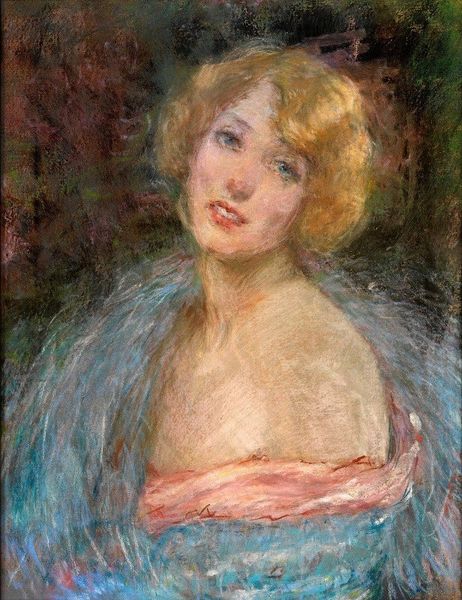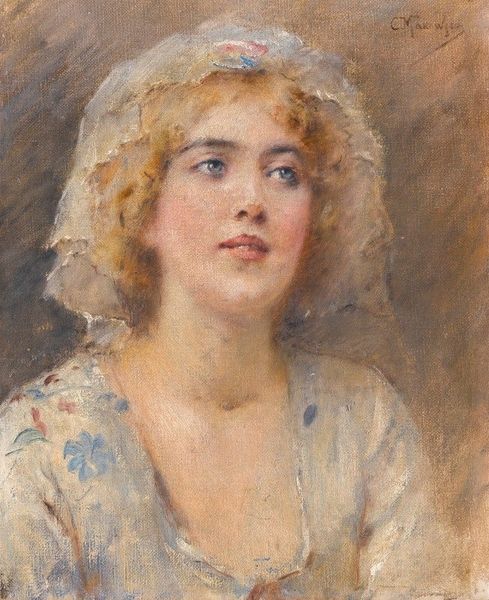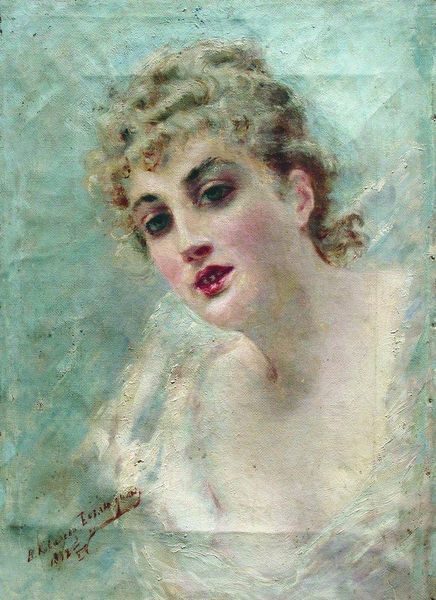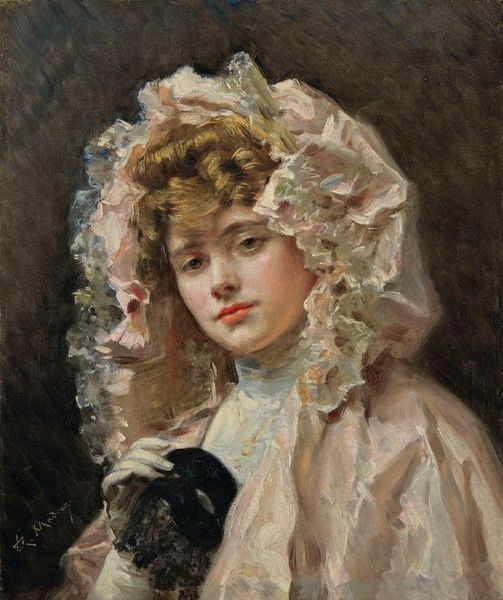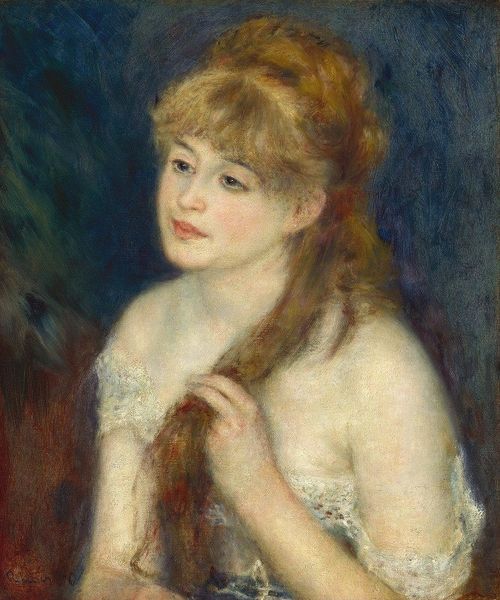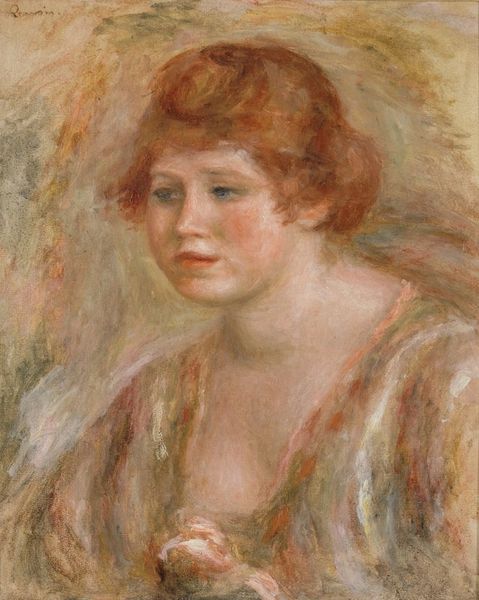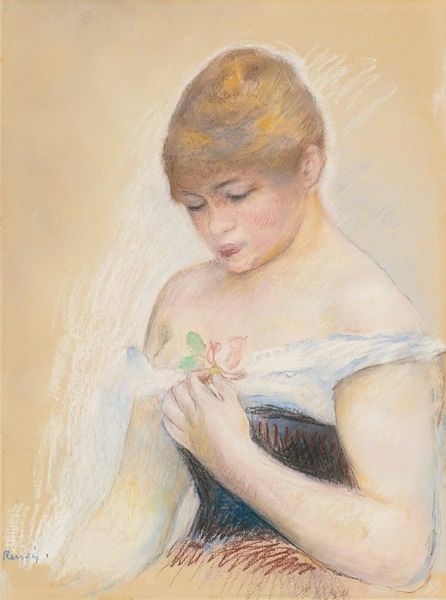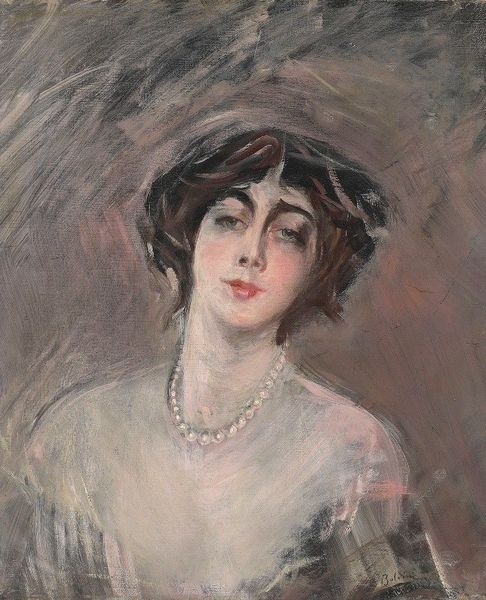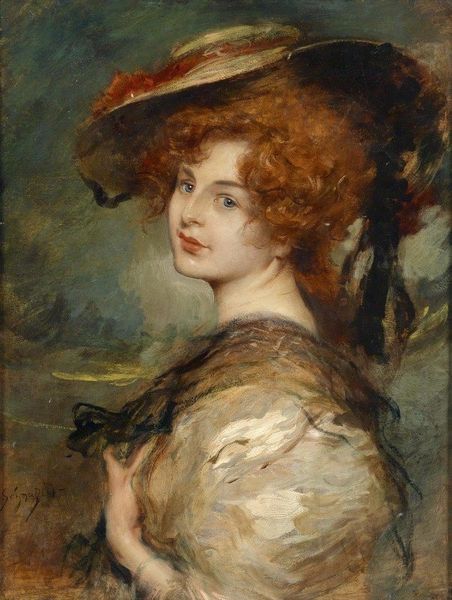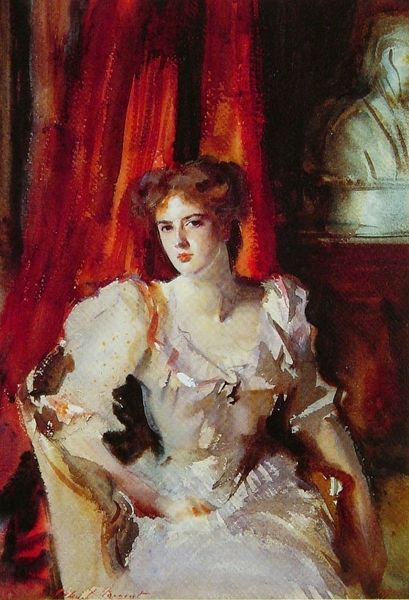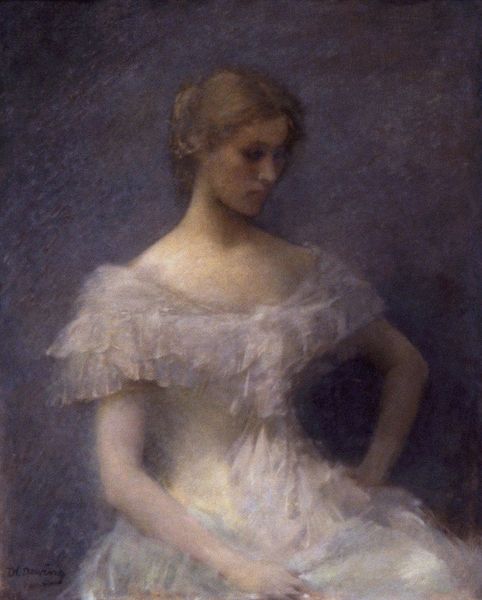
Copyright: Public domain
Curator: What strikes me immediately is the ethereal quality of the portrait; the almost pastel-like hues create a delicate and fleeting impression. Editor: Indeed. We're looking at "The Refugee (Yvonne Aubicq)", an oil painting created by William Orpen in 1917. The title itself immediately invites reflection upon the global context in which this piece emerged, at a moment marked by widespread displacement during and following World War I. Curator: The sitter’s vulnerability is palpable, wouldn't you agree? There’s a subtle resignation in her expression that, coupled with the artwork's title, evokes broader considerations around women's experiences during wartime, their bodies becoming sites of national and geopolitical anxieties. Editor: I see what you mean. While her pose might be reminiscent of classical portraiture, situating it within a more contemporaneous framework offers insight into its sociopolitical resonances. Her apparent fragility reads almost as a silent protest against the disruptions caused by conflict. Curator: Exactly! And look how Orpen uses light – it almost dissolves the figure into the background. The brushstrokes are so loose; the style really invites questions about identity. Is she being erased? Is she in a state of limbo? These were challenges women often encountered amid crises of forced migration. Editor: Right, it makes me consider how such portrayals shaped public perception, potentially affecting policies, funding for aid organizations, or influencing sympathy versus rejection towards displaced populations. Art's involvement in these conversations highlights how social issues can infiltrate artistic representation. Curator: Absolutely. Ultimately, "The Refugee" becomes a poignant comment on gender, displacement, and national identity, reflecting the era's upheaval and compelling us to reconsider whose stories were valued and preserved in visual culture. Editor: Yes, this artwork underscores art’s inherent political charge; it challenges us to unravel the threads that weave together artistic agency, historical context, and social discourse.
Comments
No comments
Be the first to comment and join the conversation on the ultimate creative platform.
